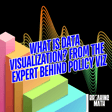Introduction to AI, Material Science, and Climate Tech
00:00:00
Speaker
Welcome back to another episode of Breaking Math, where we take a deep dive into how math shapes the world we live in and beyond. I'm your host, Gabriel Hasch, and I am joined by my co-host, Autumn Fannath, and today we're exploring the cutting edge of artificial intelligence, material science, and climate technology.
G-flow Nets and Carbon Capture
00:00:14
Speaker
Our focus? Generative flow networks, or G-flow nets, and how they're being used to discover new materials designed to capture carbon dioxide, a key component in the fight against climate change.
00:00:26
Speaker
What's fascinating about this is how we're using complex math and AI to solve one of the biggest problems of our time, reducing CO2 levels in the atmosphere. Today, we'll not only explain what G-Flow nets are, but how these AI models are being applied to create metal organic frameworks, or MOFs, materials that could one day make carbon capture much more efficient and scalable.
00:00:50
Speaker
Let's take a look at the math behind it all. We vaguely touched on what G-Flow nets are in a prior episode. The important thing to know about them is that they are robust in their ability to generate diverse and structured objects in a step-by-step manner. Again, more on that in a prior episode. And that's what makes them perfect for discovering new materials. But before we dive into into these deep topics, we would like to give our friends at Digital Discovery Journal A shout out for sending us the paper, Discovery of novel reticular materials for carbon dioxide capture using G-flow nets, by Sipsegan S. All, published earlier in 2024.
AI's Role in Material Discovery
00:01:23
Speaker
AI has been revolutionizing material science in profound ways. Imagine trying to sift through trillions of possible material combinations to find the perfect one for, say, carbon capture? This would take centuries for human scientists to do. AI, however, can explore these massive spaces much faster, helping us discover materials for applications ranging from pharmaceuticals to next-generation batteries and, of course,
00:01:50
Speaker
carbon capture. That's where reticular materials come in. These are a class of highly porous materials that include metal organic frameworks or MOS and covalent organic frameworks or COS. Think of these materials as 3D lattices made from connecting molecular building blocks. You can customize these lattices based on your needs, which is what makes them so promising for applications like CO2 capture. The more surface area you have inside the material, the more CO2 it can absorb. One of the most critical properties for CO2 capture is gravimetric surface area, which is the internal surface area available for gas molecules to stick to. In simple terms, the more internal space a material has per gram, the more CO2 it can capture.
Exploring Diverse Material Possibilities
00:02:36
Speaker
And this is where G-flonets really shine, helping us find material with extremely high surface areas that we might not have discovered otherwise.
00:02:44
Speaker
So let's break down G-Flow nets for those of you who might be hearing about them for the first time. G-Flow nets are an AI model that generates complex objects like molecules or frameworks one step at a time. You can think of it like walking through a decision tree but with a twist. Instead of just choosing one path, G-Flow nets explore multiple paths simultaneously and efficiently, ensuring that the objects generated are not only high quality but also diverse. Traditional AI models like generative adversarial networks, GANs, or variational auto encoders, VAEs, are good at generating data like images, but they often suffer from something called mode collapse, where they generate very similar outputs repetitively. G-Phonets, on the other hand, are designed to avoid this by generating a wide range of different high-quality solutions. This ability to explore diverse possibilities is critical for
MatGFN-RM Dataset Development
00:03:37
Speaker
materials discovery. In the study, the researchers trained G-FLONUTs to design metal-organic frameworks, as we said earlier, or MLFs, with high surface areas for capturing CO2. They even developed a Python library called MatGFN to streamline this process, allowing them to generate novel novel materials quickly. One key result was the creation of the MatGFN-RM dataset, which contains over 1.7 million different material structures.
00:04:03
Speaker
Many of these structures have surface areas greater than 5,000 meters squared per gram, which is a leap forward for CO2-captured materials. Let's dive deep into how Gfone ads were trained to generate these materials.
00:04:16
Speaker
ah Unlike traditional machine learning models, which learn from pre-labeled data, Geflownets use something called a reward function. In this case, the reward is tied directly to the material surface area. The larger the surface area, the higher the reward. This allows Geflownets to continuously refine their exploration processes towards generating high-performing materials.
00:04:39
Speaker
The researcher even used 11 different topologies of and MLFs, both with and without edges, as a starting point for the G-Flonents to explore. For each topology, they trained the G-Flonents to sample materials generating between 70,000 and 120,000 different material structures per topology. This eventually led to the creation of over 1.7 million materials in the MET-GFN-RM dataset.
Novel Material Generation and Evaluation
00:05:04
Speaker
What's really interesting here is how they tested the novelty of these materials. They compared the uFlowNet-generated structures to an existing dataset of MOFs called
00:05:17
Speaker
ARC MOF, using a technique called Average Minimum Distance AMD. They found that many of these materials generated by GFLONETS were not only novel, but also structurally diverse compared to materials in the reference dataset. Now, let's talk about how well these materials performed in capturing CO2. After generating the dataset, the researchers used Grand Canonical Monte Carlo simulations to evaluate the top 100 materials.
00:05:45
Speaker
These simulations helped estimate each material's working capacity, which essentially measures how much CO2 the material can absorb under varying pressure conditions. sure The results were pretty impressive. All of the top 100 materials had working capacities that ranked in the 90th percentile when compared to real-world MOFs in the core 2019 data set.
00:06:08
Speaker
these 100 materials, 13 outperformed every single material in the core 2019 data set in terms of CO2 adsorption. One standout material was the aptly named 005FFC10217.
00:06:24
Speaker
a covalent organic framework that had an incredible COT working capacity of 43 moles per kilogram. This material far exceeded the performance of any material in the core 2019 data set, demonstrating the potential of G flow nets to discover truly groundbreaking
Ensuring Structural Stability in Materials
00:06:39
Speaker
materials. Since these materials are computationally generated, the researchers needed to validate whether their structures were physically realistic.
00:06:48
Speaker
They used the MOF checker library to check for issues like over or under coordinated atoms. Basically situations where atoms were too close or too far apart from each other, which would make the material unstable. After identifying these structures, they used atomic relaxation techniques with CHGnet to refine the generated materials.
00:07:11
Speaker
This process corrected most of the structural problems with 98% of the materials showing no atomic overlaps or coordination issues post-relaxation. Interestingly, while this relaxation reduced the unit cell volume of some materials, many retained their high CO2 capture capacities.
00:07:29
Speaker
For example, the high-performing material saw its unit cell volume shrink by 23%, which lowered its CO2 working capacity slightly to 36.2 moles per kilogram.
00:07:48
Speaker
However, even after this reduction, it still outperformed all of the materials in the core 2019 dataset, making it one of the top candidates for real-world carbon capture applications.
Advancements in G-flow Nets
00:08:02
Speaker
So, what's next? Well, the study shows a lot of promise. There's still room for improvement. One area that could be optimized is selectivity. This refers to how well a material can capture CO2 specifically while leaving other gases, like nitrogen, behind. In this study, it wasn't explicitly included in the reward function, yet some of the generated materials already showed selectivity values greater than 1.
00:08:23
Speaker
which indicates a strong potential for further development. Future research could also explore multi-objective optimization. This means training the G-Flow net not only to maximize CO2 working capacity, but also to consider the other important factors like stability, synthesizability, and even the heat of adsorption, which measures how much energy is required for CO2 to stick to the material. These additional objectives could help refine the materials further.
00:08:52
Speaker
making them more suitable for large scale production and industrial use.
Broader Applications of G-flow Nets
00:08:57
Speaker
There's also the potential to improve the algorithm itself. Techniques like hyperparameter optimization and Thompson sampling could be used to make the G-flow nets more efficient in exploring the vast space of possible materials. By refining both the model and the material properties, G-flow nets could be even better at finding materials for specific needs. The research opens the door to many possibilities from using AI to generate carbon-capturing materials to expanding this method to other fields like drug discovery or battery technology.
00:09:26
Speaker
What's exciting is that this approach isn't just limited to carbon capture. The framework they've built could be applied to many areas where material properties are critical and where AI can explore the vast design spaces more efficiently than humans ever could.
Revolutionizing Material Discovery
00:09:42
Speaker
In conclusion, we've seen how GFLonets have the potential to revolutionize the way we discover material. By combining AI with the power of mathematical exploration, we're able to not only speed up the process of discovering materials, but also create novel ones that have never existed before.
00:09:58
Speaker
And while the focus of this episode has been on CO2 capture, the methods and tools developed here have far-reaching implications in many other areas. G4Neds could play a key role in solving complex problems in various scientific domains.
Conclusion and Call to Action
00:10:13
Speaker
That's all we have for today's episode of Breaking Math. If you've enjoyed this episode, be sure to subscribe and share it with others who might find it interesting. And as always, follow us on social media to stay updated on future episodes.
00:10:24
Speaker
And thanks for joining us today. Until next time, keep questioning, keep exploring, and remember that math is everywhere, even in the air we breathe. I liked that the first time I went through the paper. yeah It was kind of difficult. But after I ran it through, simplified it, did some AI magic, also stop recording so it uploads properly.




















